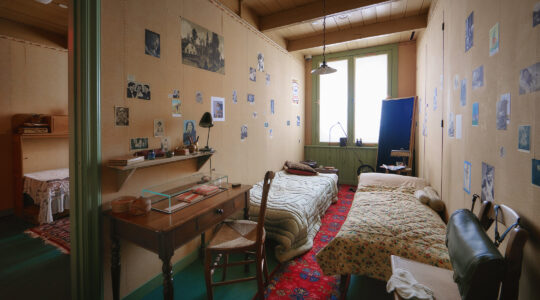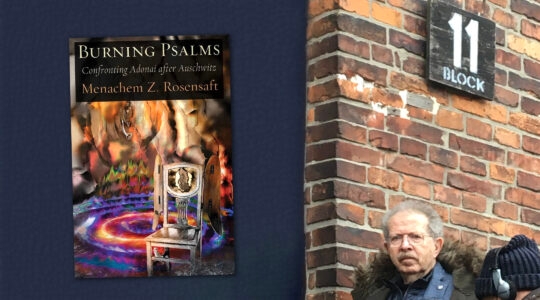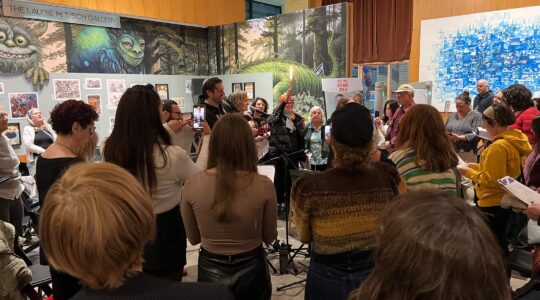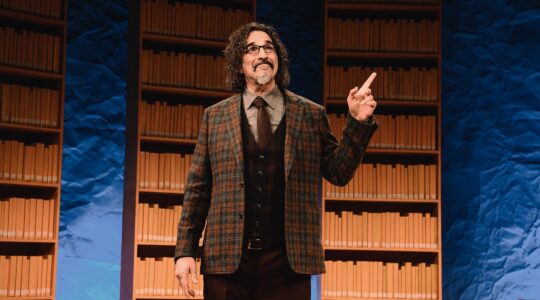Although it flourished most brightly in the post-World War II era, the Jewish-Latin connection in American pop music probably goes back as far as the history of recordings will take us. Even the authors of the entertaining liner notes for “It’s a Scream How Levine Does the Rhumba: The Latin-Jewish Musical Story: 1940-1980s” admit that the origins of this musical marriage are shrouded in mystery. But as the two-CD set, issued this month by the Idelsohn Society for Musical Preservation, richly documents, it has been a fruitful, if occasionally dopey relationship. (As if none of us have been in one of those, right?)
As the dates of the set suggest, the high-water mark of the intermingling of Jewish and Latino music takes place with the suburb-bound Jews ceding their old ghettos, soon to be barrios, first to Puerto Ricans, then later to more variegated Hispanic-American waves of immigration. That literally common ground — think East Harlem — undoubtedly was one source of the linkage. Another, amply documented in set by Xavier Cugat’s “Miami Beach Mambo” and the Barry Sisters “Channah from Havanna [sic],” was the steady trickle of Cubans to Miami, which turned into a small tsunami when the 1960 revolution deposed Fulgencio Batista.
The Idelsohn Society mavens cheerfully acknowledge that this river flowed both ways, with the Catskills hotels becoming a genial nesting ground for Latin bands, producing such little delights as Machito’s “Mambo La Concord” and Tito Puente’s “Grossinger’s Cha Cha Cha.” The presence of Machito and a cut that pairs Candido with tenor sax great Al Cohn (on Irving Berlin’s “Cheek to Cheek,” no less), underlines another shared heritage — the advent of Afro-Cuban jazz as one of the streams of the bebop revolution.
One could argue, albeit not too convincingly, that the inclusion of Stan Getz and Charlie Byrd smoothing their way through “Desafinado” is one logical outcome of that bit of jazz evolution. But, in fact, the Bossa Nova “craze” of the early 1960s is really an outlier in terms of this album, a Lusophone musical phenomenon with an entirely different rhythmic framework from the Cuban and Puerto Rican styles that predominate on these two disks and — for the most part — on the charts of the time. It’s not a question of better or worse, just of different.
On the other hand, as the second disk of “Levine Does the Rhumba” shows, the presence of jazz-trained and -influenced musicians like Eddie Palmieri and Mongo Santamaria, with their Jewish arrangers and key players, Barry Rogers and Marty Sheller, respectively, guaranteed that salsa would develop as a richly textured, rhythmically complex genre, heavy on the trombones but driven by some of the densest orgies of polyrhythms heard on this continent. It seems entirely logical that Rogers (a son and grandson of cantors) would eventually be followed by Larry and Andy Harlow on salsa bandstands, and that Larry’s nickname would be El Judio Maravilloso — the Marvelous Jew. Given the wonderful turbulence of the American artistic stewpot, it seems no less inevitable that Larry Harlow was baptized in Santeria in the 1950s, and that this album is concluded by his stirring “Yo Soy Latino (I Am Latino).”
“Levine” is just the latest exploration of interethnic musical connections to emanate from the Idelsohn Society. Its predecessors include “Black Sabbath: The Secret History of Black Jewish Relations,” “’Twas the Night Before Hanukkah,” a mordant collection of December crossover recordings, and “Songs for the Jewish-American Jet Set,” a fascinating tribute to Tikva Records.
As is usually the case with Idelsohn releases, “Levine Does the Rhumba” is an effective if occasionally odd collection of the brilliant — Machito, Al Cohn, all the giants of ’70s New York Latin music from Eddie Palmieri and Larry Harlow to Celia Cruz rocking “Hava Nagila” — and the downright weird. Where else could you hear the Barton Brothers’ Yiddish-Spanglish “Arriba (Part 1)” followed by a tribute to the two profane Yiddish comics by Pupi Campo, a mostly instrumental version of their infamous “Joe and Paul?” Some of the tracks on the set are undoubtedly of historical rather than musical interest (although I was pleasantly surprised by Eydie Gorme’s work with Trio Los Panchos). A little of Ruth Wallis’ smirking softcore on the set’s title cut goes a very long way.
There are a few cuts that, while certainly of more than passing aesthetic interest, seem to be included mainly to provide a reason to note the occasional Latin inflections of the Brill Building’s Jewish creators. Little Eva’s classic hit “Uptown” is always welcome, but I’m not sure it really illustrates a historical truth about Latin-Jewish music as much as it reminds us of how terrific Eva Boyd is. On the other hand, that is a historical truth in its own right.
“It’s a Scream How Levine Does the Rhumba: Latin-Jewish Musical Story: 1940-1980s” is available at www.idelsohnsociety.com.
The New York Jewish Week brings you the stories behind the headlines, keeping you connected to Jewish life in New York. Help sustain the reporting you trust by donating today.




